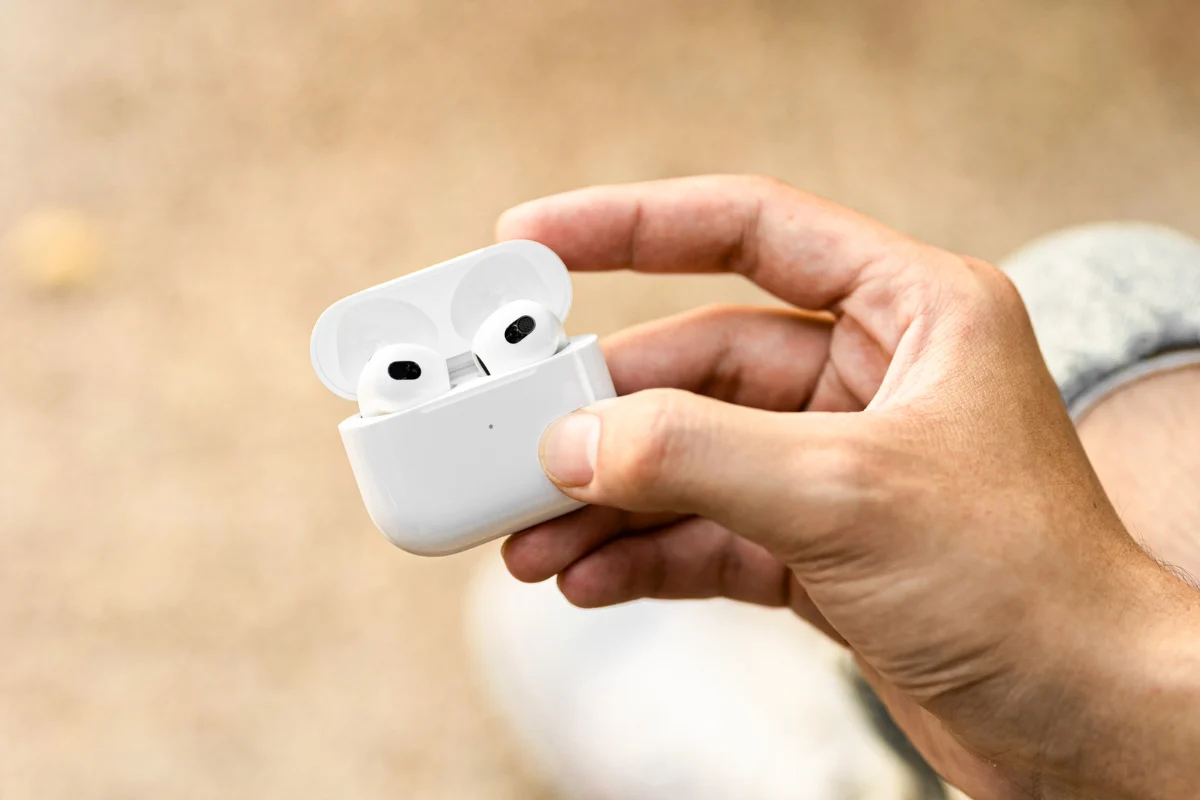If your AirPods sound quieter than usual, even at full volume, you’re not alone. Many users face this issue without realizing it could be caused by a range of factors, some as simple as a setting buried deep in your phone, or even a bit of earwax buildup.
The good news is that in most cases, the fix is straightforward. From tweaking audio settings to cleaning the earbuds, there are several ways to restore your AirPods to their full sound potential.
This guide will cover effective tips for both iPhone and Android users. It will help you diagnose the issue and make your AirPods louder without damaging them or your ears. Let’s start with the basics and work our way up to advanced solutions.
Check Your Volume Settings First
Before trying anything else, make sure your volume is actually at its maximum. It sounds obvious, but sometimes system-level limits or Bluetooth sync issues can restrict your AirPods’ output.
- Use the Side Volume Buttons: While playing music or a video, increase the volume using your iPhone or Android buttons to ensure you’re at the maximum.
- Check App-Specific Volume Levels: Apps like Spotify, YouTube, or games may have independent volume sliders.
- Disconnect and Reconnect AirPods: This can reset volume sync between the phone and AirPods.
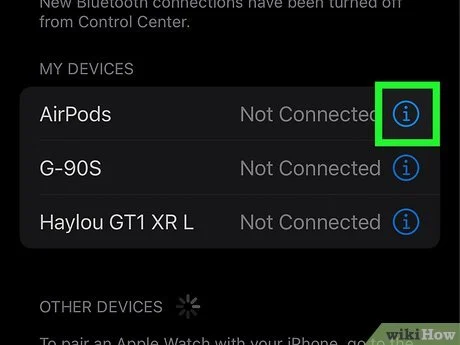
- Try a Different App or Track: Sometimes it’s just a low-volume file.
If your volume is already maxed out and still sounds quiet, it’s time to dig into deeper settings, especially on iPhones, where safety features could be capping your sound output.
Disable Headphone Safety Features on iPhone
iPhones include built-in hearing protection features designed to reduce loud sounds automatically. While this is great for long-term ear health, it can sometimes make your AirPods sound too quiet, especially if you often listen at moderate levels.
To disable this feature:
- Open Settings
- Go to Sounds & Haptics
- Tap Headphone Safety
- Toggle off Reduce Loud Sounds
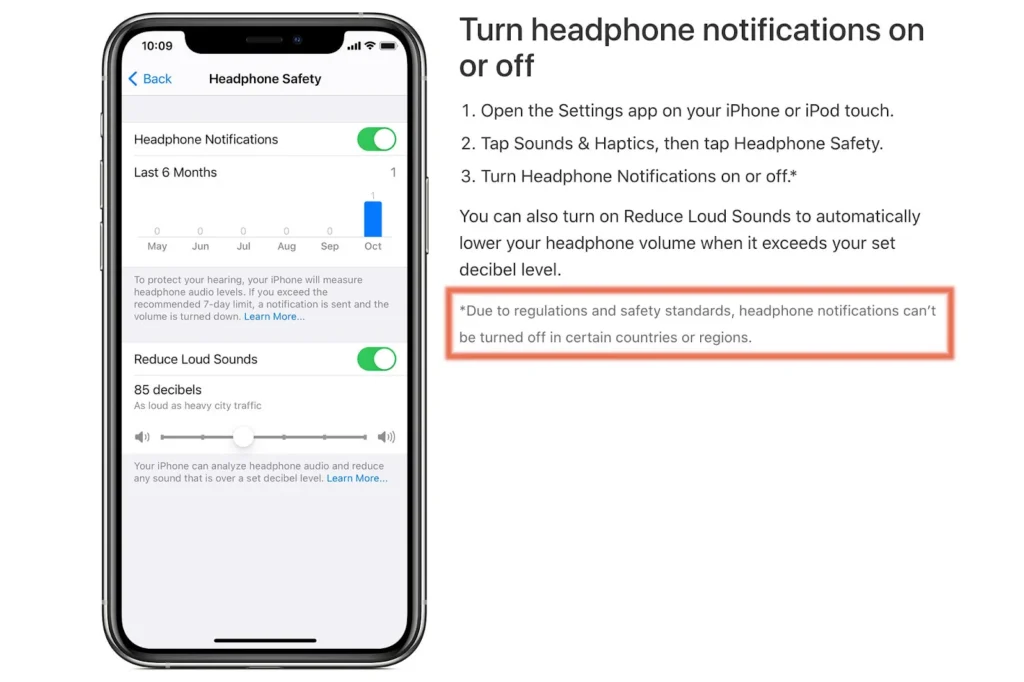
You can also slide the decibel limit higher if you don’t want to turn it off entirely.
Another related setting is Headphone Notifications, which warn you if you’ve been listening at high volumes for too long. While this doesn’t actively reduce volume, it may create confusion by muting or adjusting audio when triggered.
Disabling these features can immediately improve your volume output, especially in music or video playback. Just keep in mind that these protections are there for a reason, and prolonged exposure to high volume can lead to hearing issues.
Use this step only if you feel your AirPods are consistently too quiet and it’s affecting your experience.
Clean Your AirPods Properly
One of the most overlooked reasons AirPods may sound quieter is physical blockage, mainly from earwax, dust, or lint. Over time, this buildup can significantly muffle sound output.
Here’s how to clean them safely:
- Use a dry, soft-bristled brush or a clean, dry toothbrush to remove debris from the speaker mesh gently.
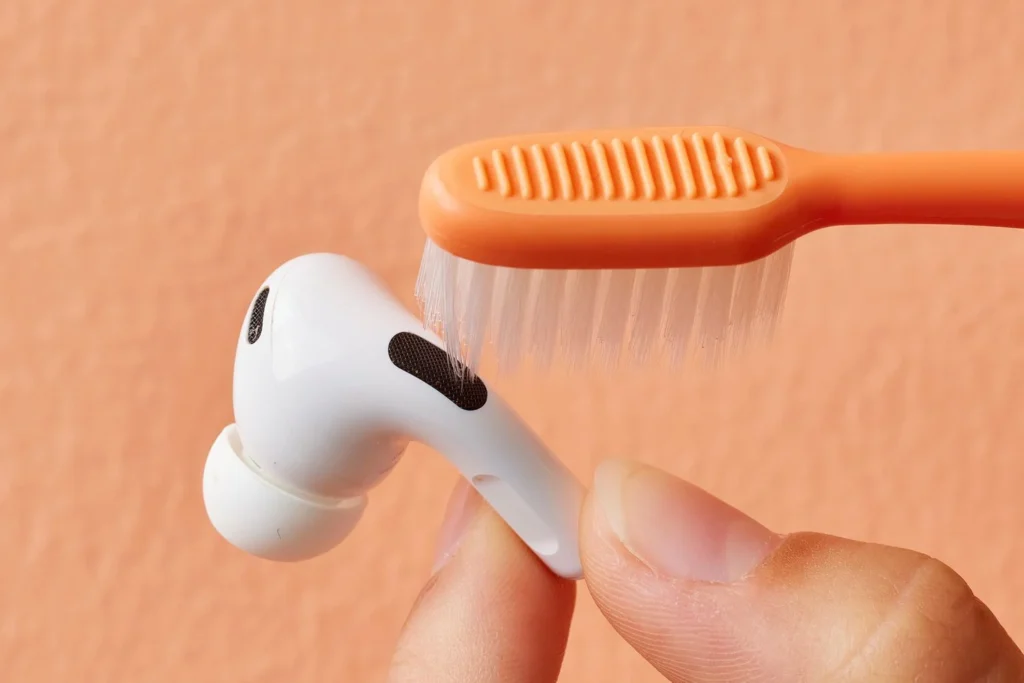
- For stubborn buildup, try using a dry cotton swab or a soft cloth slightly dampened with 70% isopropyl alcohol, but avoid getting any liquid inside the openings.

- Avoid compressed air, sharp tools, or inserting anything into the mesh. These can damage the internal components.
- Don’t forget to also clean the charging case, especially around the contact points.
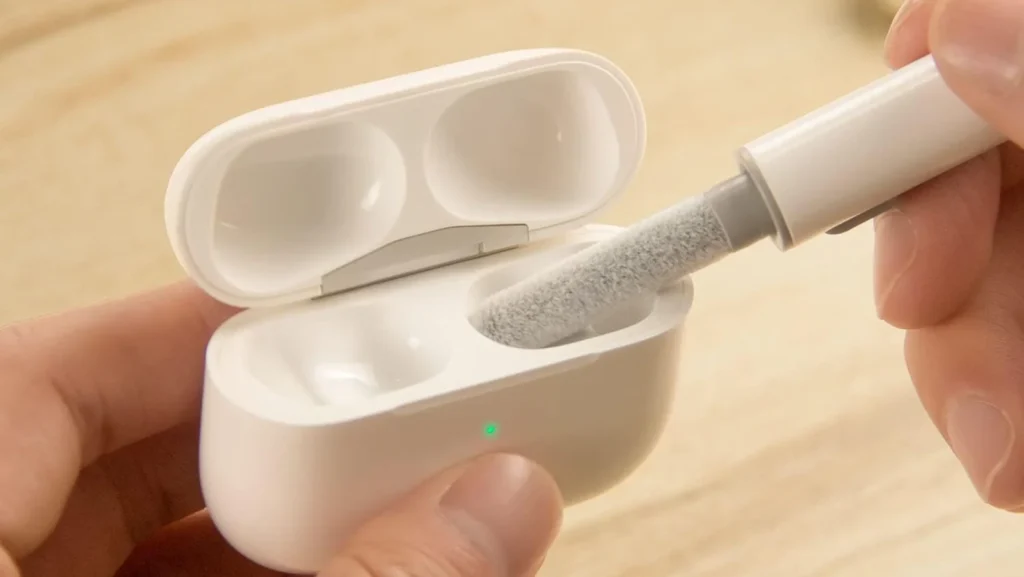
A surprisingly small layer of grime can reduce loudness, mainly if it covers the tiny speaker grilles. Many users notice an immediate improvement after a proper cleaning.
Be sure to make cleaning a part of your regular routine, especially if you use your AirPods during workouts or outside where more debris can accumulate. Just five minutes of careful cleaning can restore them to near-original volume clarity.
Calibrate Volume Between Your Device and AirPods
If your phone and AirPods aren’t synced properly regarding volume control, this could result in reduced output. Calibration resets their connection and can fix this.
Here’s how to calibrate:
- Connect your AirPods and play music.
- Turn the volume down to zero using the phone buttons.
- Disconnect AirPods from Bluetooth (don’t unpair).
- Play music again from the phone’s speakers and turn the volume down to zero.
- Reconnect the AirPods and adjust the volume normally.
This syncs both systems to the same baseline. It’s a simple fix that works for many people experiencing inconsistent or low volume levels across apps or during calls.
Adjust EQ and Audio Balance Settings
Your phone’s audio settings play a big role in how loud or punchy your AirPods sound, especially when listening to music or streaming. Adjusting these can offer a noticeable improvement.
On iPhone:
- Go to Settings > Music > EQ
- Choose presets like Late Night (boosts overall volume) or Loudness if available
- You can also try Treble Booster or Bass Booster, depending on your preference
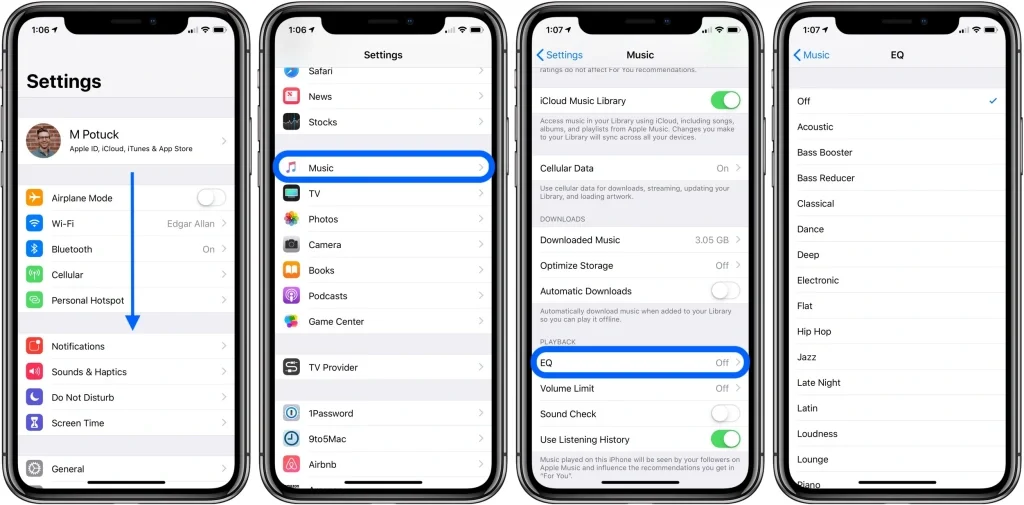
Additionally, check the audio balance:
- Go to Settings > Accessibility > Audio/Visual
- Make sure the Left-Right balance slider is centered
- Turn off Mono Audio unless needed for specific reasons
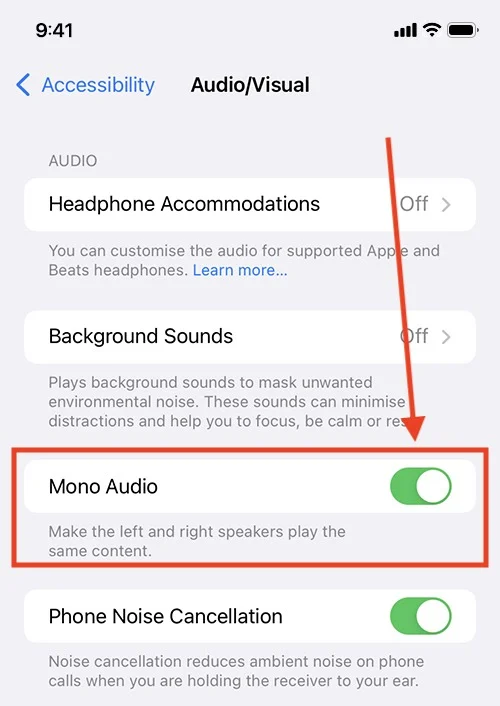
On Android, some models offer system-level sound settings or allow EQ adjustments through third-party apps like Wavelet or Neutralizer.
Minor tweaks here can dramatically change perceived loudness and clarity, especially for users who stream music or podcasts at lower volumes. Just be aware that some EQ settings may enhance volume at the expense of clarity or battery life. Try a few combinations to find what works best for your ears and your content.
Use a Volume Booster App (for Android users)
If you’re using AirPods with an Android device, your audio output might feel lower than expected due to compatibility limitations. A volume booster app can help.
Popular options include:
- Volume Booster GOODEV – lightweight and simple
- Precise Volume – includes customizable audio profiles
- Wavelet – offers EQ and sound enhancements
Use these with caution. Over-amplifying sound may cause distortion or harm your hearing. Start low and adjust gradually. Also, some phones may limit third-party apps’ ability to override system audio restrictions, so results can vary depending on the device model and Android version.
Test AirPods with Other Devices
Sometimes, the issue isn’t with your AirPods but with the device they’re paired to. Connecting them to another phone, tablet, or computer is a quick way to troubleshoot.
If the volume sounds normal on a different device, the problem likely lies in the original device’s audio settings, EQ, or Bluetooth calibration.
However, if your AirPods sound low across all devices, the issue is more likely related to the AirPods themselves, such as buildup, hardware wear, or firmware bugs. This test helps isolate the root cause without needing tools or tech support.
When to Consider Resetting or Replacing Your AirPods
If nothing else has worked, it may be time to reset your AirPods to factory settings.
To reset:
- Go to Settings > Bluetooth, tap the i next to your AirPods, then tap Forget This Device
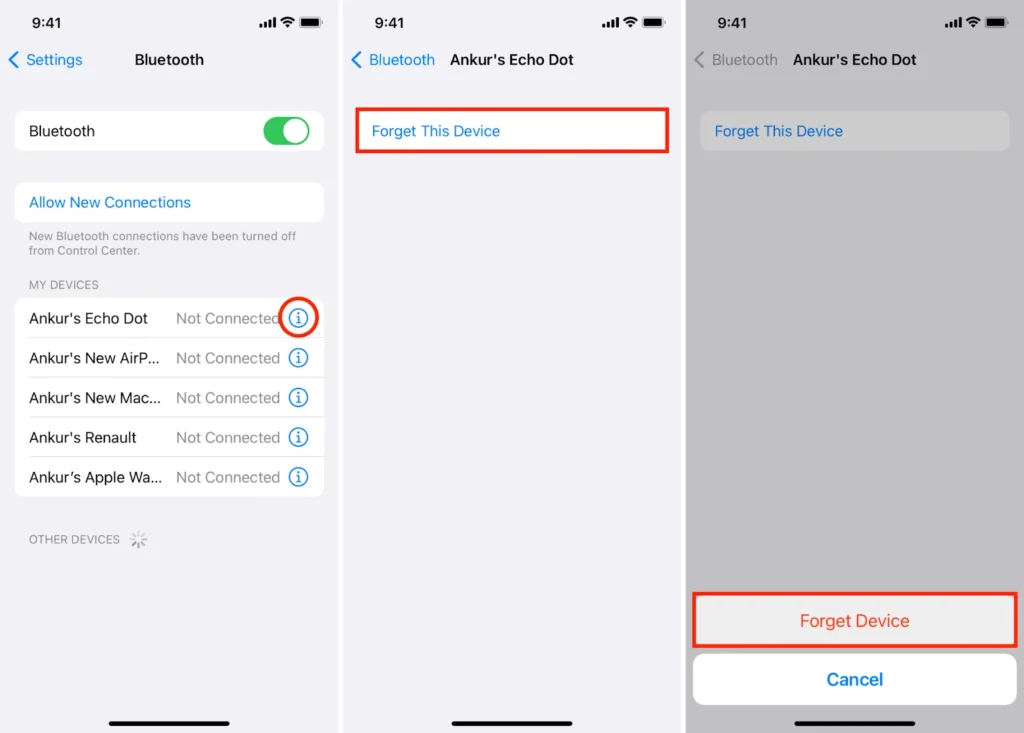
- Place AirPods in the case, open the lid, then press and hold the back button for 15 seconds until the LED flashes amber and then white.
This clears out connection bugs or firmware hiccups.
Still not getting results? Your AirPods may be aging or have internal speaker wear. If they’re out of warranty, weigh repair vs. replacement. Apple also offers discounted replacements through its Out-of-Warranty service.
Conclusion
AirPods are fantastic, until volume issues make them frustrating. Thankfully, most problems can be fixed with proper cleaning, a few setting tweaks, or recalibration. If you’re on Android, volume booster apps can bridge some of the compatibility gap.
In tougher cases, reset or replace them to restore full sound quality. Regular cleaning and smart settings also help keep your AirPods loud and clear.
Try each solution step by step to find what works best. With the right adjustments, you’ll be back to enjoying crisp, full-volume sound whether you’re listening to music, watching shows, or taking calls.

